Springfield XD .40 S&W Pistol, 4" Barrel, Fixed Sights, Black – XD9102 For Sale
$509.99
The Springfield XD .40 S&W Pistol (model XD9102) is a flagship polymer pistol from Springfield Armory that combines superior ergonomics with dependable performance. Featuring a four-inch barrel and a sleek black finish, this full-sized pistol is designed for robust handling and precise accuracy. It includes multiple safety features, such as a striker status indicator, loaded chamber indicator, grip safety, Ultra Safety Assurance (USA) Action Trigger System, and firing pin block safety, which work together to prevent accidental discharges. Adaptable to various shooting needs with its availability in different calibers, the XD 4 Full Size exemplifies Springfield Armory’s legacy of intuitive design and high performance, setting a modern standard for firearms.
Is the Springfield XD-40 discontinued?
Yes, the Springfield XD-40 has been discontinued.
What is .40 S&,W good for?
The .40 S&W (Smith & Wesson) cartridge is popular for several purposes:
1. **Self-Defense:** It is widely used for personal protection due to its good balance of power, recoil, and magazine capacity. It offers more stopping power than the 9mm but less recoil than the .45 ACP, making it a preferred choice for many.
2. **Law Enforcement:** Many police departments adopted the .40 S&W because it provides effective stopping power and a compromise between the 9mm and .45 ACP. However, in recent years, some agencies have started switching back to 9mm due to advancements in bullet technology that improve 9mm performance.
3. **Competition Shooting:** Some competitive shooters use the .40 S&W in contests like USPSA (United States Practical Shooting Association) and IDPA (International Defensive Pistol Association) due to the major power factor it achieves, which can offer scoring advantages.
4. **Recreational Shooting:** The cartridge is also used for target practice and recreational shooting. It is widely available and offers a good shooting experience with manageable recoil.
Overall, the .40 S&W is regarded as a versatile and effective cartridge for various shooting applications.
Is 40 S&,W stronger than 9mm?
The .40 S&W is generally considered to be stronger than the 9mm in terms of stopping power and muzzle energy. The .40 S&W typically fires a heavier bullet at a comparable or slightly higher velocity than the 9mm, resulting in greater kinetic energy. However, the 9mm is commonly praised for its higher magazine capacity and lower recoil, which can aid in faster follow-up shots. The choice between the two often depends on personal preferences, specific use cases, and factors like recoil sensitivity or ammunition cost.
Is an XD better than a Glock?
The comparison between an XD (Springfield Armory) and a Glock largely depends on personal preference and specific use cases. Here are some aspects to consider when comparing the two:
1. **Ergonomics**: Some users prefer the grip angle and feel of the XD, while others prefer the Glock. It’s important to handle both to see which feels more comfortable to you.
2. **Trigger**: Trigger feel can vary between models; some find the XD’s trigger more to their liking, while others prefer Glock’s consistent pull.
3. **Reliability**: Both are known for their reliability, but Glock has a particularly long-standing reputation in law enforcement and military use.
4. **Capacity**: Most models offer comparable magazine capacities, but check specific models for differences.
5. **Customization**: Glock generally has a larger aftermarket for parts and accessories, offering more customization options.
6. **Price**: Prices can vary based on the model and features, so compare specific models.
Ultimately, whether an XD is better than a Glock depends on what factors are most important to you in a firearm. If possible, try shooting both to see which one suits you better.
Why did the Springfield Armory shut down?
The Springfield Armory, once a key center for the manufacture of United States military firearms, was shut down in 1968 due to a combination of factors. The primary reasons included cost-cutting measures and a shift in military procurement strategies that favored utilizing private contractors over government-run facilities. Additionally, advancements in technology and changes in military needs made it more economical for the government to purchase weapons from private industry rather than maintain a government-operated production facility. The closure was part of a broader trend during this period of reducing government-operated factories in favor of privatization.
Can you conceal carry a Springfield XD 40?
Whether you can conceal carry a Springfield XD 40 depends on the laws and regulations of the state or country you are in. In the United States, concealed carry laws vary by state; some states are more permissive, while others have stricter regulations. Generally, you would need to obtain a concealed carry permit or license in your jurisdiction, which typically involves background checks, training, and meeting certain eligibility criteria.
It’s important to check the specific laws in your state or country regarding concealed carry permits, approved firearms, and any particular restrictions that might apply to the Springfield XD 40. Always ensure you are in compliance with the local laws and regulations.
Why did the FBI stop using 40 S&,W?
The FBI’s decision to move away from the .40 S&W cartridge in favor of the 9mm was primarily due to several factors:
1. **Advancements in Ammunition**: Improvements in 9mm ammunition technology have enhanced its performance significantly, making it comparable to larger calibers like the .40 S&W in terms of stopping power, while also offering greater capacity and reduced recoil.
2. **Recoil and Accuracy**: The .40 S&W has a more pronounced recoil compared to 9mm, which can affect accuracy, especially in follow-up shots. The reduced recoil of the 9mm allows for faster, more accurate shooting.
3. **Training and Proficiency**: The easier handling and reduced recoil of 9mm make it more suitable for training purposes, allowing agents to maintain a higher level of proficiency and shoot more comfortably and accurately.
4. **Cost and Logistics**: 9mm ammunition is generally less expensive than .40 S&W, providing cost savings in both training and operations. Additionally, 9mm firearms tend to have a longer lifespan and require less maintenance.
5. **Standardization**: Using the same caliber as many other law enforcement agencies simplifies logistics and ammunition supply, leading to efficiencies in management and deployment.
Overall, the combination of improved technology, logistics, operational efficiency, and training benefits influenced the FBI’s transition back to the 9mm round.
Is 40 S&,W more powerful than 45 ACP?
The power of a cartridge can be evaluated based on several factors, including muzzle velocity, muzzle energy, and bullet weight. The .40 S&W and .45 ACP are both popular cartridges with their own advantages, so let’s examine them based on these criteria:
1. **Muzzle Velocity**: Generally, the .40 S&W typically has a higher muzzle velocity compared to the .45 ACP. Standard .40 S&W rounds can achieve velocities around 950 to 1,200 feet per second (fps), depending on the bullet weight and load, whereas standard .45 ACP rounds typically range from 800 to 1,000 fps.
2. **Muzzle Energy**: Despite having a larger diameter and heavier bullet, the .45 ACP generally produces less muzzle energy compared to a .40 S&W. The muzzle energy for the .40 S&W is usually between 400 to 550 foot-pounds (ft-lb), while the .45 ACP typically produces around 350 to 450 ft-lb.
3. **Bullet Weight**: The .45 ACP usually fires heavier bullets, often in the range of 185 to 230 grains, while the .40 S&W typically uses bullets weighing 135 to 180 grains.
In summary, in terms of muzzle velocity and muzzle energy, the .40 S&W is generally considered more powerful than the .45 ACP. However, the .45 ACP has larger and heavier bullets, which contributes to its reputation for delivering significant stopping power at close range. The choice between the two often depends on personal preference and specific use case scenarios.
Why is .40 S&,W ammo so hard to find?
The difficulty in finding .40 S&W ammunition can be attributed to several factors:
1. **Demand Fluctuations**: The .40 S&W caliber, once popular among law enforcement and civilian shooters, has seen a decline in demand in favor of other calibers like 9mm. This shift can affect production priorities for manufacturers.
2. **Supply Chain Issues**: Global supply chain disruptions, especially in recent years, have impacted the availability of raw materials and components required for ammunition production.
3. **Increased Gun Ownership**: Periods of increased firearm purchases often lead to higher demand for ammunition, contributing to shortages across various calibers, including .40 S&W.
4. **Manufacturing Capacity**: Ammo manufacturers may prioritize calibers with higher current demand or more lucrative contracts, reducing the allocation for .40 S&W production.
5. **Panic Buying**: Economic uncertainties, political changes, or events causing uncertainty can lead to panic buying, depleting stock rapidly.
These factors collectively can make .40 S&W ammo harder to find on the market.
Why is .40 S&,W unpopular?
The .40 S&W cartridge has become less popular over recent years for several reasons:
1. **Recoil and Handling:** Compared to the 9mm, the .40 S&W has a snappier recoil, which can be more challenging for some shooters to handle, especially in rapid-fire situations or for those with less experience.
2. **Capacity:** Firearms chambered in .40 S&W typically have a lower magazine capacity compared to their 9mm counterparts due to the larger cartridge size. As higher capacity is often desired, this is a disadvantage.
3. **Advancements in 9mm Ballistics:** Improvements in 9mm ammunition technology, with better bullet designs and more effective stopping power, have closed the performance gap between the 9mm and the .40 S&W. This has led many to favor the 9mm for its balance of capacity, recoil control, and effectiveness.
4. **Cost and Availability:** Ammunition for .40 S&W can be more expensive and less widely available than 9mm, which is one of the most popular calibers worldwide.
5. **Weight and Wear:** Firearms chambered in .40 S&W can be heavier and can cause increased wear on the gun over time, leading to potentially higher maintenance costs and a shorter lifespan for some parts.
6. **Law Enforcement Trends:** Many law enforcement agencies, which previously used .40 S&W, have switched back to 9mm due to the benefits mentioned above, further decreasing the popularity of the .40 S&W among civilian users.
These factors combined have contributed to the declining popularity of the .40 S&W in recent years.
Which is stronger, 10mm or 40 S&,W?
The 10mm Auto cartridge is generally considered stronger than the .40 S&W. The 10mm offers higher velocity and energy, providing greater stopping power. It typically uses heavier bullets and can generate more muzzle energy, which makes it a popular choice for applications that require more power, such as hunting or defense against larger animals. The .40 S&W, on the other hand, was designed to be a more manageable round with less recoil, making it suitable for law enforcement and personal defense.
What is the most lethal 40 S&,W ammo?
The lethality of ammunition can depend on various factors such as bullet design, velocity, and intended use. In the context of .40 S&W ammunition, some popular choices that are often discussed for their stopping power and performance include:
1. **Federal HST**: Known for reliable expansion and penetration, making it a favored choice for self-defense.
2. **Speer Gold Dot**: Renowned for its bonded core, which aids in penetration and weight retention.
3. **Hornady Critical Duty**: Designed to meet FBI standards, it performs well in barrier penetration tests.
4. **Winchester Ranger-T**: Praised for its expansion and penetrating capabilities, commonly used in law enforcement.
The “most lethal” can vary based on specific situational needs and legal considerations. It’s important to choose ammunition based on reliable performance and suitability for your intended use. Always adhere to local laws and regulations regarding ammunition selection, especially for self-defense.
Does Springfield still make XD?
Yes, Springfield Armory still manufactures the XD series of pistols.
When did Springfield stop making rifles?
Springfield Armory stopped producing rifles in 1968.
Is the Springfield XDM discontinued?
Yes, the Springfield XDM series has been discontinued.
Be the first to review “Springfield XD .40 S&W Pistol, 4" Barrel, Fixed Sights, Black – XD9102” Cancel reply
Related products
Springfield XD .40 S&W
Springfield XD .40 S&W Pistol, 3" Barrel, Fixed Sights, Black – XD9802
Springfield XD .40 S&W
Springfield XD .40 S&W Pistol, 5" Barrel, Fixed Sights, Black – XD9402
Springfield XD .40 S&W
Springfield XD .40 S&W Pistol, 4" Barrel, Fixed Sights, Silver, Black – XD9302
Springfield XD .40 S&W
Springfield XD .40 S&W Pistol, 3" Barrel, Fixed Sights, Silver, Black – XD9822
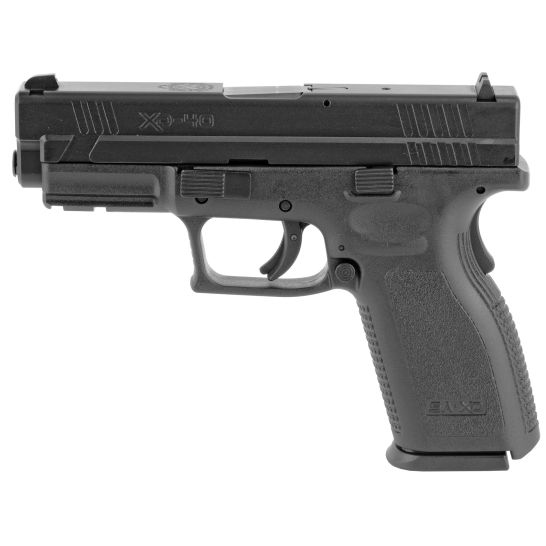
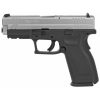
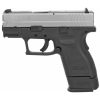
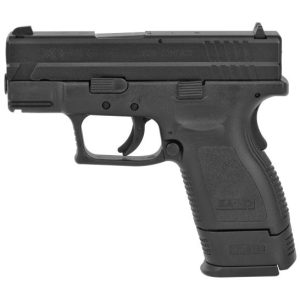
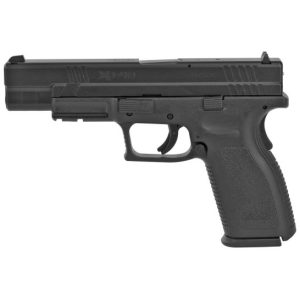
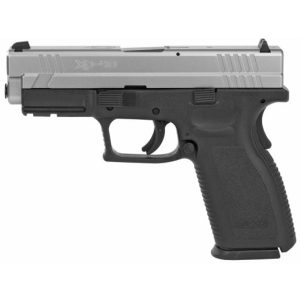
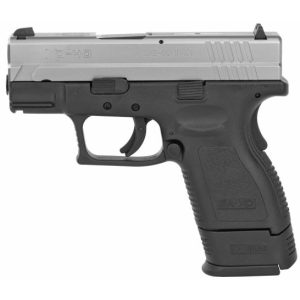
Reviews
There are no reviews yet.